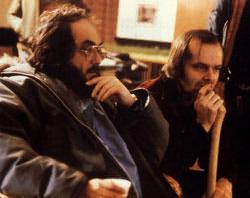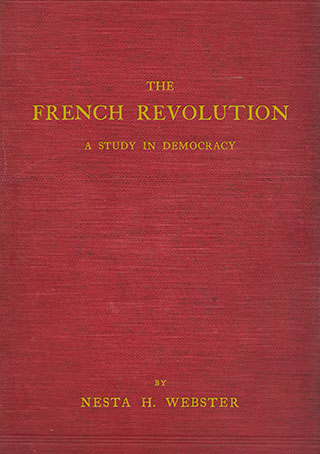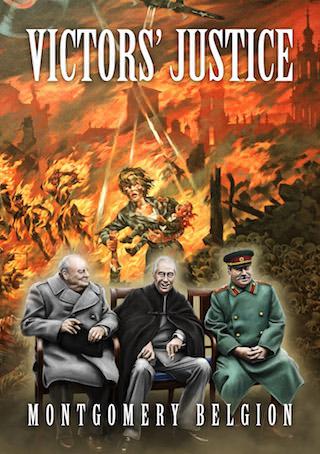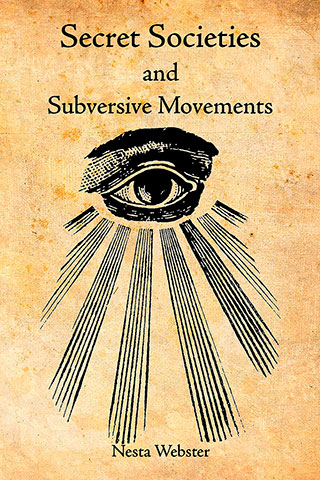Secrets of The Shining
How faking the Moon landings nearly cost Stanley Kubrick his marriage and his life

The Shining is surely Stanley Kubrick’s most misunderstood masterpiece. I use the word ‘masterpiece’ guardedly, because I have never really thought that The Shining was a very good film. At the time, in 1980, when I first saw it, I didn’t like it at all. The way that Kubrick threw out so much of Stephen King’s great source material and replaced it with a lot of things that just didn’t seem to make any sense, really bothered me. Hopefully, before I am finished with this essay, the reader will see it is only when Kubrick dramatically alters the script from King’s novel that we can begin to understand what he is trying to tell us in his version of The Shining.
It should be understood from the beginning that The Shining is Stanley Kubrick’s most personal film (outside of, possibly, Eyes Wide Shut). Before we are done here, it will be easy to see that Kubrick was only using Stephen King’s novel as a launching pad (excuse the pun) to be able to tell a completely different story under the guise of making a film based on a best-selling novel. He did this for a very important reason – mainly to save his life.
 Let’s not get too far ahead of ourselves. In fact, let’s start at the beginning.
Let’s not get too far ahead of ourselves. In fact, let’s start at the beginning.
There are two main characters in the film, Jack Torrance (played by Jack Nicholson) and his son Danny (played by Danny Lloyd). It is important to understand here that Jack and Danny are two aspects of Stanley Kubrick himself. Jack is the practical, pragmatic guy who wants to be a great artist. And he is, apparently, willing to do anything to accomplish his goal of being an artist (writer). Jack, like Stanley, has black hair, he is idiosyncratic and even smokes the same cigarettes as Stanley (Marlboro).
Danny is the other side of the great director. He is the child-like Kubrick. It is Danny who is actually the real artist. The Danny side of Kubrick side is psychic, youthful, and sees things that no one else sees. Danny also has a tendency to tell people things that should be kept quiet.
The first part of the The Shining is probably the longest, most boring, 58 minutes in Kubrick’s career. The opening of the film takes place with us witnessing Stanley’s pragmatic side, Jack, cutting a deal with the Manager of the Overlook Hotel. The deal between Jack and the Manager of the Overlook is that Jack can write (that is, create) all that he wants as long as he “takes care” of the Overlook. One other important point is that the Manager of the Overlook tells Jack that the previous caretaker went crazy from the stress of the job and killed his wife and two girls. Jack says he is “intrigued,” but takes the deal anyway.
 The Manager of the Overlook Hotel is wearing red, white and blue. Jack’s wife Wendy (played by Shelly Duval) and his son Danny also wear red, white and blue for almost the entire first hour of the film. In this symbolic interpretation the Overlook Hotel is AMERICA. It was built, just like the Manager says, on the graves of Indians. Even when walking on the floor of the Overlook Hotel, one finds oneself trampling over various Native American symbols. The Overlook Hotel itself is America. Like America, the Overlook Hotel is new and shiny. It is ostentatious, corny, and architecturally boring. As the Manager tells Wendy, “All of the best people stayed here.” But there is something very deep happening. Kubrick brushed shoulders with the elite of the world. He knows what is going on.
The Manager of the Overlook Hotel is wearing red, white and blue. Jack’s wife Wendy (played by Shelly Duval) and his son Danny also wear red, white and blue for almost the entire first hour of the film. In this symbolic interpretation the Overlook Hotel is AMERICA. It was built, just like the Manager says, on the graves of Indians. Even when walking on the floor of the Overlook Hotel, one finds oneself trampling over various Native American symbols. The Overlook Hotel itself is America. Like America, the Overlook Hotel is new and shiny. It is ostentatious, corny, and architecturally boring. As the Manager tells Wendy, “All of the best people stayed here.” But there is something very deep happening. Kubrick brushed shoulders with the elite of the world. He knows what is going on.
We have to begin to understand Kubrick’s story from his use of symbols. As I like to say, if a picture is worth a thousand words, then a symbol is worth a thousand pictures. For it will be through the use of symbols that the real story of The Shining can be revealed.
The Manager of the Overlook, while interviewing Jack, has an American Eagle right behind his head. It is as if the Eagle is the power behind the Manager. Not only is the Eagle the symbol of America, but it should be noted that the Lunar Lander of the Apollo 11 mission was called “The Eagle”. To the Manager’s right on the desk is an American flag. Symbolically the Manager (played by Barry Nelson) is the face of the government of the United States. Jack has cut this deal with the government to be the “caretaker” of the Hotel. The Manager tells Jack that his main job is to prevent the Overlook Hotel (America) from appearing like it is decaying. The Manager reiterates that this is Jack’s primary responsibility.
On their first day in the Hotel, Danny has a vision of the previous caretaker’s daughters, and he sees that they are twins. The previous caretaker’s daughters were not twins in the Stephen King novel. This discrepancy between the book and the film will grow in importance as we continue.
Jack, Danny and Wendy also meet Dick Hallorann, who is the cook for the Overlook. He befriends Danny, and it is through him that Danny discovers that he is not alone when it comes to psychic ability. Dick warns Danny to stay away from Room 237.
Jack, Wendy and Danny have now fully moved into the Hotel. There is a long cold winter ahead of them. At first Jack loves the hotel but he is having problems with his writing. Also he cannot sleep. Meanwhile, Wendy and Danny are having fun.
Jack is not writing. Instead he is throwing a tennis ball at the wall in the room where his typewriter sits. On the wall, which is being struck by the tennis ball, is a Native American artistic motif that looks suspiciously like a group of rockets about to be launched.
 Apollo was the god of Archery. Jack is playing ball with Apollo’s arrows.
Apollo was the god of Archery. Jack is playing ball with Apollo’s arrows.
Finally the ball bounces away from Jack and disappears into the darkness of the hotel. Jack walks over and looks down at the model of the maze. He sees Wendy and Danny caught in the middle of the maze, totally unaware of the nature of the deal that he has cut with the Overlook.
A cold winter storm has now blown over the hotel. The oncoming storm is a symbol of the Cold War between Russia and the United States. Of course the Cold War is also one of the driving forces for the entire reason for faking the moon landings. It was necessary to hide the advanced U.S. saucer technology from the Soviet Union. We were living in a very dangerous world, and it was shrewd to hide our advanced technology from the Russians. This is the reason for the bears that are seen all over The Shining. The Russian Bear, and its competition for the race to the Moon, was a driving force behind having to fake the Apollo moon landings.
Jack, his family, and the Overlook Hotel, are trapped in the cold, just as America was trapped in the Cold War with Russia. The stuffed bears, seen throughout the film, are the Soviet Empire’s symbol. Symbolically, the Bears seen through the film are also the representation of the pressure that the Russians put on the USA to get to the Moon. They had to fake the moon landings and cover up the real truth behind the flying saucer craft and machinery that the U.S. government actually has created and employed since World War Two.
 Danny is riding his bike through the halls of the Overlook when he comes upon the twin daughters of the previous caretaker. They stare at Danny and together they say, “Come play with us, Danny. Forever and ever.” Danny turns and wheels it out of there. At this point in the film we graphically discover the nature of the deal that Jack really cut with the Manager of the Overlook. It is the most crucial scene in the film. Danny is in a hallway playing with his trucks. Suddenly, out of nowhere, the Project, the Overlook Hotel, rolls the tennis ball at him. It is a gesture that says, “Wanna play?”
Danny is riding his bike through the halls of the Overlook when he comes upon the twin daughters of the previous caretaker. They stare at Danny and together they say, “Come play with us, Danny. Forever and ever.” Danny turns and wheels it out of there. At this point in the film we graphically discover the nature of the deal that Jack really cut with the Manager of the Overlook. It is the most crucial scene in the film. Danny is in a hallway playing with his trucks. Suddenly, out of nowhere, the Project, the Overlook Hotel, rolls the tennis ball at him. It is a gesture that says, “Wanna play?”
It is here that we discover what happened to Jack’s tennis ball that was previously swallowed up by the darkness of the Overlook. We also discover what game it is that the twin daughters of the previous caretaker were inviting Danny to play.
 Mystified by where the ball came from, Danny stands up, and the audience finally sees what the nature of the Project really is about. As Danny stands up, the answer is revealed in an instant. Danny is wearing a sweater with a crudely sewn rocket pictured on the front. On the rocket clearly seen on Danny’s sweater are the words: “APOLLO 11.”
Mystified by where the ball came from, Danny stands up, and the audience finally sees what the nature of the Project really is about. As Danny stands up, the answer is revealed in an instant. Danny is wearing a sweater with a crudely sewn rocket pictured on the front. On the rocket clearly seen on Danny’s sweater are the words: “APOLLO 11.”
The audience watching the film literally sees the launch of Apollo 11, right before their eyes, as Danny rises from the floor. It isn’t the real launch of Apollo 11, it is, of course, the symbolic launching of Apollo 11. In other words, it isn’t real.
What happens next is crucial to understanding everything else that happens in the film. Danny, bewildered, walks down the hallway. He sees that room 237, the room that Hallorann warned him about, has a key in the lock and the door is wide open.
It is important to note that the room in question was numbered 217 in the Stephen King version of The Shining. For unknown reasons, Kubrick changed it to 237. Those unknown reasons are about to become known. Danny is literally carrying a symbolic Apollo 11 on his body, via the sweater, to the Moon as he walks over to room 237. Why do I think this? Because the average distance from the Earth to the Moon is 237,000 miles.
The real truth is that this movie is really about the deal that Stanley Kubrick made with the Manager of the Overlook Hotel (America). This deal was to get Kubrick to re-create, in other words, to fake, the Apollo 11 moon landing.
Danny represents the artistic side of Kubrick. Because of the complexity of the artistic realization of the manner in which the lunar landings needed to appear, Kubrick needed to trust his artistic side. Room 237 represents the fake lunar set that Stanley had to create to make the lunar landings appear factual. But really, on this set, and in this room, nothing is real. As the film will soon reveal, room 237 has to be lied about. It cannot be understood at all … ever. Nothing real ever happens in room 237.
For a moment, in the film, it looks like Danny is actually going to enter room 237. But we are never sure.
Kubrick told the press that he changed the room number from 217, as in the King book, to 237 because the owner of the hotel, which was standing in for the Overlook, did not want customers shunning room 217. Therefore, Kubrick changed the number to one that was not in the hotel. So I called up the Timberline Hotel on Mount Hood in Oregon and asked if I could have a reservation for room 237. I was surprised when they said ‘yes’. I asked if this was a room in a newer part of the resort, and was told that the hotel had always had a room 237!
In the next scene Jack has a bad dream while he is working. He tells Wendy that in his dream he has killed Wendy and Danny. Meanwhile Danny enters the scene, and it is obvious that some mysterious force has physically hurt Danny. This mysterious force has also torn his Apollo 11 sweater. Wendy, horrified, thinks that Jack did it. In a way she is right, because Danny got hurt because of the deal that Jack cut.
 Frustrated, Jack goes to the bar located in the Gold Room. Obviously stressed, Jack whispers to no one that he would sell his soul for a drink.
Frustrated, Jack goes to the bar located in the Gold Room. Obviously stressed, Jack whispers to no one that he would sell his soul for a drink.
It is then that Jack meets the real manager of the Overlook Hotel. A mysterious man suddenly appears behind the bar. His name is Lloyd and he is the bartender of the Overlook Hotel. Clearly, Stanley Kubrick shows Lloyd in a Satanic light. Lloyd seduces Jack with a drink.
Jack has sold his soul to the Project, to being the caretaker of the Overlook. Jack and Lloyd’s conversation is interrupted by Wendy’s entrance. Lloyd and Jack’s glass of Scotch suddenly disappear. Wendy tells Jack that someone else is in the hotel.
Jack then goes to room 237 and sees the manifestation of a young woman into an old woman. Because room 237 is, symbolically, the Lunar Set for Apollo 11, Jack has to lie to Wendy about what is going on in the room. He tells her that nothing is going on in room 237. It is apparent that Danny must have hurt himself.
It is true, Danny did get hurt because of Jack. Danny is the side of Stanley that knew of Stanley’s secret project. Somehow he got into a situation where they (the Overlook Hotel – America) hurt him. After this Jack begins to go to hell physically. He is growing an unkempt beard and is not combing his hair – two things that Stanley Kubrick was known for doing, or not doing, himself.
Now Jack (Nicholson) is looking a lot like Stanley Kubrick. Especially as he began to appear under the stress of the twin productions going on at once: 1) 2001: A Space Odyssey, and 2) faking the Apollo 11 landings. It should also be noted that Jack and Stanley are about the same age and they have the same hair color.
Early 2001: A Space Odysey production photos show a youthful and un-bearded Kubrick with combed hair, looking quite handsome. But photos taken four years later – near the end of the production of 2001: A Space Odyssey – show that Kubrick was a physical wreck. The de-evolution of Stanley Kubrick’s appearance during the production of 2001: A Space Odyssey is disturbingly close to Jack Torrance’s (Jack Nicholson’s) appearance in The Shining.
Despite his disheveled appearance Jack has started writing again. Wendy (who is really supposed to be Kubrick’s wife Christina) wants to read the book that Jack is working so furiously on. She asks to see what he is writing. Jack is surprised by her entrance into the room where he does his writing. Angrily he rejects her. He tells her to stay out of the room where he is writing. It is clear that Wendy (Kubrick’s wife) is not allowed to know anything about the Project. But what is this book that Jack is writing?
 Wendy soon finds out what is in the book that Jack is writing. It is then that we get the clincher that proves that this essay is the correct interpretation of Kubrick’s The Shining. Wendy sneaks into Jack’s writing room. Slowly she begins to read the book that Jack has been working on. This scene is totally original to the movie. It is not in the King novel. Although it is mildly terrifying, it is not that horrific. Yet it is the centerpiece of the film and arguably the scariest scene in the movie. Why? Because every single one of the hundreds of pages that Jack has been furiously writing is a variation of only one sentence: “All work and no play makes Jack a dull boy.”
Wendy soon finds out what is in the book that Jack is writing. It is then that we get the clincher that proves that this essay is the correct interpretation of Kubrick’s The Shining. Wendy sneaks into Jack’s writing room. Slowly she begins to read the book that Jack has been working on. This scene is totally original to the movie. It is not in the King novel. Although it is mildly terrifying, it is not that horrific. Yet it is the centerpiece of the film and arguably the scariest scene in the movie. Why? Because every single one of the hundreds of pages that Jack has been furiously writing is a variation of only one sentence: “All work and no play makes Jack a dull boy.”
Incredibly, every page has this exact sentence. And it is written over and over. Truly, it is scary enough to think that Jack has just been sitting there, day after day, writing the same sentence, over and over. Wendy face reveals her fear over the discovery.
 What does it all mean? May I humbly suggest that the word “All” in this repeated sentence actually stands for “A11,” that is: “A-One-One”, or Apollo 11? “A11 work and no play makes Jack a dull boy.” May I suggest that the nickname, or the code name, for the faking of the Apollo Moon Missions was “A11”? Accepting that this is true, we can see what Stanley is really telling us: “Apollo 11 work and no play makes Jack (Kubrick) a dull boy.” If you think that I am stretching things here, I would like to point out the patch that NASA had created to symbolize the Apollo program.
What does it all mean? May I humbly suggest that the word “All” in this repeated sentence actually stands for “A11,” that is: “A-One-One”, or Apollo 11? “A11 work and no play makes Jack a dull boy.” May I suggest that the nickname, or the code name, for the faking of the Apollo Moon Missions was “A11”? Accepting that this is true, we can see what Stanley is really telling us: “Apollo 11 work and no play makes Jack (Kubrick) a dull boy.” If you think that I am stretching things here, I would like to point out the patch that NASA had created to symbolize the Apollo program.
 There are other “A’s” in the film also. The Overlook Hotel has several A’s built into its construction when viewed from the outside. Stanley has used these A’s before also. Here is the cover of A Clockwork Orange with Alex menacingly coming out of the “A” with his allseeing-eye cufflink.
There are other “A’s” in the film also. The Overlook Hotel has several A’s built into its construction when viewed from the outside. Stanley has used these A’s before also. Here is the cover of A Clockwork Orange with Alex menacingly coming out of the “A” with his allseeing-eye cufflink.
 It is clear from the evidence presented in the film that Kubrick’s wife (Shelly Duval) had discovered that he (Stanley Kubrick) had made a secret deal with the Manager of the Overlook (i.e., with the rulers of the USA). Shelly Duval (Christina Kubrick) also discovered that what she thought was one thing actually turned out to be another. What Mrs. Kubrick discovered was that – instead of making a science fiction film called 2001: A Space Odyssey – her husband was really working to create the fake Apollo moon landings.
It is clear from the evidence presented in the film that Kubrick’s wife (Shelly Duval) had discovered that he (Stanley Kubrick) had made a secret deal with the Manager of the Overlook (i.e., with the rulers of the USA). Shelly Duval (Christina Kubrick) also discovered that what she thought was one thing actually turned out to be another. What Mrs. Kubrick discovered was that – instead of making a science fiction film called 2001: A Space Odyssey – her husband was really working to create the fake Apollo moon landings.
At this point the film finally gets really interesting. Frightened by this revelation, Wendy (Stanley’s wife) wants Jack (Stanley) to quit the Project. Jack (Stanley) angrily replies: “That is so typical of you! … I’ve made an agreement… I have obligations to my employers!”
Danny contacts Dick Hallorann in Florida (which, I might add, is where Apollo 11 was launched). Dick laboriously travels from Florida to Colorado. In another abrupt break with the novel, Jack Torrance kills Hallorann as soon as he arrives at the Overlook (so much for Hallorann’s psychic abilities!).
While I think this scene is very disturbing, and I doubt if I can ever prove this, but I think Stanley Kubrick is telling us something very definite with this alteration to the King novel. I believe that the naïve side of him, represented by Danny, told someone that he, Kubrick, was faking the Apollo missions. He may even have told this person that he was faking the lunar landings for NASA while also appearing to produce the film 2001: A Space Odyssey. Hallorann is the representation of the person that Kubrick mistakenly revealed this most secret of all information. Because of that, Hallorann, or the person who Stanley told, had to die. The secret must remain safe. This also explains why Kubrick had to hide all of this crucial information inside the construct of the King novel. Kubrick wanted the story to get out, but he was also afraid for his life. Kubrick had to fake the making of the Stephen King novel so that he could reveal that he was involved in the faking the moon landings!
 The truth is that The Shining is the story of how Stanley Kubrick cut a deal with the U.S. government to fake the Apollo moon landings. It is also the story of how Kubrick may have accidentally told someone what he had done and how that person had to be killed. The Shining is also the story of how faking the Apollo moon landings almost sacrificed his relationship with his wife. Finally it is the story of how Stanley Kubrick barely escaped alive to create another day.
The truth is that The Shining is the story of how Stanley Kubrick cut a deal with the U.S. government to fake the Apollo moon landings. It is also the story of how Kubrick may have accidentally told someone what he had done and how that person had to be killed. The Shining is also the story of how faking the Apollo moon landings almost sacrificed his relationship with his wife. Finally it is the story of how Stanley Kubrick barely escaped alive to create another day.
The Shining is the story of how a part of Stanley Kubrick was killed by the agreement that he made with the U.S. government to become the “caretaker” of the Project called “A11,” or “Apollo 11.” It is also the story of the history of NASA.
This explains why the previous “caretaker” was so pressured and stressed that he had to kill his twin daughters. Why? Because the previous NASA missions before Apollo were named Gemini!
There is much more in this film than can be discussed here. I am sure that much more will be discovered. I present this tidbit of an interpretation to show not only that Stanley Kubrick directed the Apollo moon landings, but also to ask NASA to release all of Kubrick’s Apollo moon landing footage in their original, glorious 70 mm film. It is time to shed the lies. But also it is time for the world to view, uncensored, Stanley Kubrick’s greatest unknown masterpiece.








